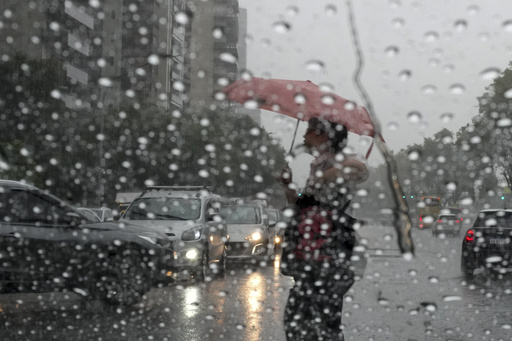The Climate Prediction Center of the National Oceanic and Atmospheric Administration (NOAA) has indicated a 60% likelihood of a mild La Niña event occurring this fall, expected to persist until March.
La Niña is a phase of a natural climate oscillation that can lead to extreme weather patterns globally, with its impact varying considerably by region.
While the exact characteristics of this forthcoming La Niña remain uncertain, meteorologists have identified some potential trends.
Northern regions of South America are anticipated to experience more precipitation than usual, while the southern United States and parts of Mexico may see a decrease in rainfall.
In contrast, the northern United States and southern Canada could face above-average rainfall conditions.
This climate occurrence is the cooler phase of the El Niño-Southern Oscillation (ENSO), a natural system that influences wind patterns and ocean temperatures in the Pacific, leading to significant weather events around the world.
The warmer phase, El Niño, develops when the trade winds that generally blow across the Pacific toward Asia weaken, allowing warm ocean waters to accumulate along South America’s western coast.
Conversely, during La Niña episodes, these trade winds strengthen, causing colder water from the ocean depths to rise to the surface and resulting in cooler ocean temperatures in the eastern Pacific.
These colder temperatures, alongside atmospheric shifts, can modify the jet stream’s trajectory—a narrow belt of swift air traveling from west to east—by pushing it further north.
This alteration allows the jet stream to interact more with the ocean, tapping into its moisture, affecting storm paths, and increasing precipitation levels.
Recently, the globe underwent a “triple-dip” La Niña occurrence from 2020 to 2023. According to NOAA’s climate scientist Michelle L’Heurex, this was notable because it marked the first instance of three consecutive winters with La Niña conditions since the mid-1970s.
L’Heurex pointed out that La Niña events typically have a longer duration and recur more frequently than their El Niño counterparts.
Ben Cook, a climate scientist affiliated with NASA’s Goddard Institute for Space Studies, acknowledged the potential for another La Niña this year, mentioning that while unusual, it is not unprecedented.
According to Cook, the increased frequency of La Niña can be particularly challenging for areas that are already experiencing drought, such as East Africa; a potential La Niña could signal a continuation of challenging conditions.
The localized impact of La Niña on weather patterns is contingent upon the specific region and season.
In South America, for instance, eastern Argentina might experience drier conditions, whereas countries such as Colombia, Venezuela, and northern Brazil could witness above-average rainfall.
The variability lies in geographical nuances, influenced by the monsoon cycles present in Central and South America, with La Niña modifying the strength and placement of these cycles, according to L’Heurex’s explanations.
In the United States, the Northeast and Ohio Valley regions generally observe wetter conditions attributed to an active storm pattern emanating from the jet stream’s position.
Additionally, the waviness of the jet stream often triggers colder outbreaks, especially in the central and southern U.S.
Though snowfall remains unpredictable and primarily depends on individual storm trajectories, locations like New England, New York, and the Great Lakes typically experience snowier winters during La Niña events, albeit with no guarantees.
In contrast, southern and southeastern U.S. areas, being farther from the active storm patterns, tend to be warmer and drier than usual.
The relationship between climate change and the occurrences of La Niña and El Niño is not yet fully understood.
Paul Roundy, a climate scientist at the University of Albany, noted that climate models suggest an increase in El Niño events while indicating a decline in La Niña frequency, though there’s not a universal consensus among all models.
These models struggle to differentiate between the natural variability of the El Niño and La Niña cycles and the influencing effects of climate change on oceanic and atmospheric temperatures.
Roundy cautioned against concluding that climate change is solely driving increased El Niño occurrences, as nature possesses inherent variability that may lead to more frequent La Niña events.
In conclusion, shifting patterns may emerge in the coming decades, potentially reversing trends observed today.



